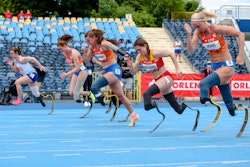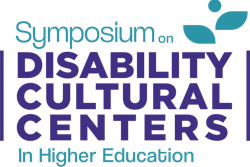Making Web Sites Accessible to the Disabled
The push by colleges and universities to enhance courses and campus communication with Internet Web sites has unfolded largely in the past few years with little attention being paid to making the technology accessible to students with disabilities.
Last summer, federally enforceable regulations took effect mandating that all “EIT” (electronic and information technology) developed by federal agencies and federally affiliated institutions and organizations be accessible to persons with disabilities. Virtually all of the nation’s colleges and universities fall under the domain of the new standards contained in the Section 508 amendments to the Rehabilitation Act of 1973, according to a consensus of higher education experts.
Enacted as part of the Workforce Investment Act of 1998, the Section 508 amendments prescribe new standards for six areas of technology:
• Software applications and operating systems
• Web-based information or applications
• Telecommunication products
• Video or multimedia products
• Information appliances, such as fax machines and kiosks
• Desktop and portable computers
While colleges and universities have traditionally focused on making hardware, such as computers with voice recognition technology and other special devices, available to disabled students, institutions have had less experience with designing and deploying Web sites that can be interpreted for the disabled by special information devices.
The looming challenge for colleges and universities is to upgrade campus Web sites and course management software systems to make them readable by devices that disabled students can use. For example, a Web site accessible to a blind student has to be designed so that a device known as a screen reader can read and describe aloud the text and visual images present on a Web page.
David P. Bobzien Jr., the campus webmaster at the University of Nevada in Reno, says the legacy of highly decentralized Web publishing in higher education represents a major obstacle for schools attempting to make their Web sites accessible to the disabled. Starting in the mid-1990s, schools typically developed campus Web sites by allowing individual faculty members and departments to construct their individual Web pages with little central oversight, virtually no standardization and varying Web software platforms, according to Bobzien.
“This is a legacy representative of the grass-roots, democratic approach of how the (entire) Internet was developed, but in universities this pattern (collides) with the need to have a centralized and standard approach for making Web sites accessible for the disabled,” Bobzien says.
Bobzien notes that even among schools that have adopted the enterprise course management software platforms, such as WebCT and Blackboard, their Web infrastructures are still heavily bogged down with non-accessible sites maintained by individual professors and departments.
“It may take (colleges and universities) years to realize fully accessible Web sites,” he adds.
At the University of Nevada this past summer, the department led by Bobzien unveiled a redesigned university Web site gateway that complies with the standards spelled out by Section 508. The Web site redesign process required 14 months of work. IT officials at the school also distributed a new university IT guideline book to the faculty that encourages the use of Web tools to make sites accessible to the disabled, according to Bobzien.
“The next phase is to mandate the use of the necessary tools for Web site accessibility. Our Web management team is looking into this,” he says.
Vendors have sought to provide their higher education clients a wide variety of solutions for upgrading their Web sites for accessibility. One company, cognizant of the fact that many individual faculty members in addition to the campus IT staff have been responsible for academic Web sites, has introduced a free solutions kit that evaluates the accessibility of a Web site previously created with the company’s software. San Francisco-based Macromedia Inc. has made available the Macromedia Accessibility and E-Learning Solutions Kit, a resource for clients who purchase or upgrade Macromedia Flash, Dreamweaver or eLearning Studio.
“Both accessibility and e-learning are major concerns of our government, business and education customers, and we wanted to provide them with a valuable resource to address these important issues,” says Pat Brogan, a vice president of Macromedia.
Another company has responded to the accessibility issue by introducing courseware serving the needs of disabled students taking online courses and of disabled faculty seeking course authoring online instruction. eCollege, a Denver-based provider of technology and services for online education programs, has announced that their products go beyond the standards established by Section 508.
“Over a three-year R&D effort, we have worked one on one with members of the disabled community to re-engineer company processes and products to support new levels of accessibility,” says Oakleigh Thorne, chairman and CEO of eCollege.
© Copyright 2005 by DiverseEducation.com





















